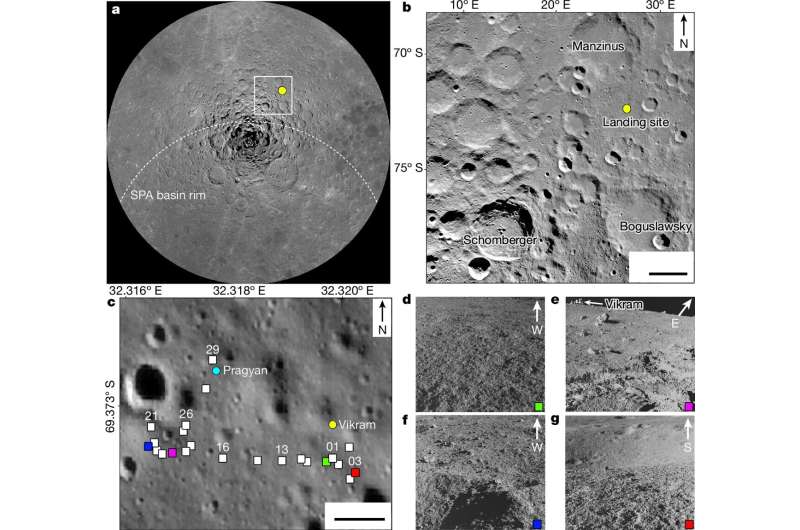
August 22, 2024 by Bob Yirka , Phys.org
Collected at: https://phys.org/news/2024-08-analysis-soil-moon-south-pole.html
India’s Chandrayaan-3 mission was launched last summer and its Vikram lander touched down on the moon’s surface last August. Shortly thereafter, it released a rover called Pragyan. Since that time, the rover has been meandering around the surface of the moon near its south pole, collecting and testing soil samples along with measuring seismic activity and atmospheric conditions.
A team of geologists and planetary scientists at India’s Physical Research Laboratory, working with colleagues from the U R Rao Satellite Center and the Space Applications Center, both in India, analyzed soil sample data collected by Pragyan, finding evidence bolstering theories that the moon’s surface was completely molten not long after it was formed.
In their paper, published in the journal Nature, the group describes their analysis of radiation data sent back from the rover’s alpha-particle X-ray spectrometer.
As part of soil testing, the rover used its alpha-particle X-ray spectrometer 23 times to learn more about the makeup of the moon’s regolith. Thus far, data sent back from the sensor has shown that all 23 samples were made mostly of ferroan anorthosite.
Sensor data from other projects has shown that regolith in other areas, such as the moon’s equator and mid-latitude zones, is made up of roughly the same material. This, the researchers note, suggests a uniform layer of material covering the moon.
Such a uniform layer bolsters theories that the moon’s entire surface was covered by molten magma early in its history, the result of its manner of formation. The same theory also suggests the moon was formed when a large object named Theia slammed into the Earth, launching vast amounts of surface material into space.
The material coalesced into the moon, according to the theory. It also explains why so many moon rocks have a similar composition to those found on Earth. Such a collision would have generated a lot of heat, which would explain a molten-magma layer covering the moon’s surface.
More information: Santosh Vadawale, Chandrayaan-3 APXS elemental abundance measurements at lunar high latitude, Nature (2024). DOI: 10.1038/s41586-024-07870-7. www.nature.com/articles/s41586-024-07870-7
Journal information: Nature

Leave a Reply